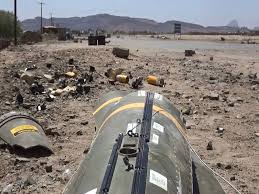Mine Center sounds alarm about disaster of contamination of Yemen by cluster bombs, remnants of war
SANAA, Nov. 10 (YPA) – The Director of the Executive Center for Mine Action in Sanaa, Brigadier Ali Sofra, has revealed the societal problem facing Yemen regarding the scale and scope of the country’s contamination with cluster bombs and remnants of war.
Brigadier-General Safra said in a press statement on Wednesday that “the limited human resources compared to the size and scope of contamination with cluster bombs and remnants of war have become a societal problem and a problem facing the Yemeni government.”
He pointed out that the center is the only program among 164 countries in the world that deals with explosives without life jackets and protective equipment as a result of stopping the center’s support by the United Nations and the UN Development Program.
“During the current year, we have removed 204 cluster bombs, bringing the total number that has been lifted since the start of the war on Yemen to more than 4.5 million small cluster bombs,” Sofra said.
He added that “From time to time we are surprised by the discovery of new types of cluster bombs that the Saudi-led coalition targeted Yemen with,” stressing that the center monitored 19 types of American, British, Brazilian and finally Pakistani cluster bombs.

Sofra explained that the number of civilian casualties during October of this year reached 46, including 18 dead and 28 wounded, and during the first week of November there were 8 dead, while the total casualties this year reached 650 dead and wounded.
For his part, the Director of Monitoring and Documentation Department at the Executive Center for Mine Action, Colonel Amin Salman, said that the total number of civilian casualties that have been documented since the beginning of the truce on April 2 until November 7 reached 119 victims, including 54 children.
Salman added, “The Mine Action Center in Yemen sounds the alarm and announces that the various threats and negative effects of cluster bombs are still ongoing and their impact extends for decades.”
YPA


